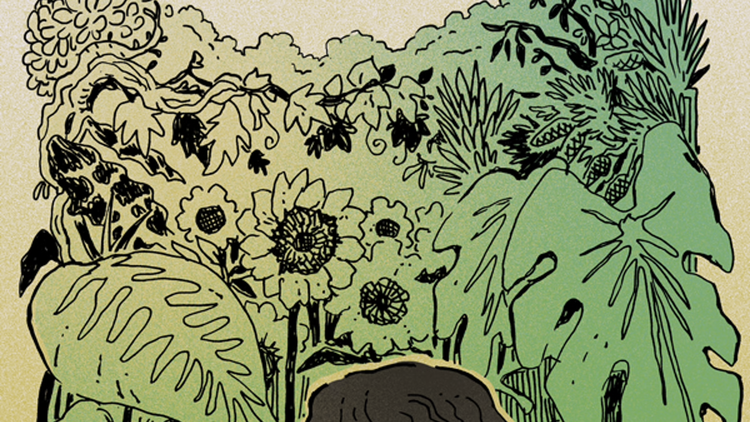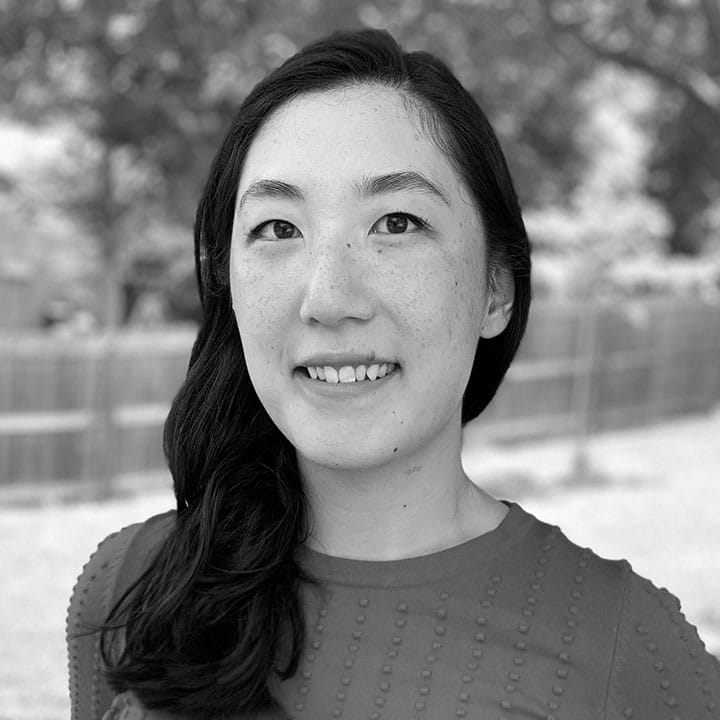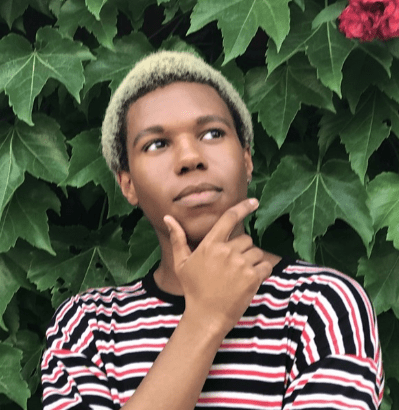When Is A Dystopia Just The Real World?
Samit Basu is the author of several novels, most recently of The City Inside (out now from Tordotcom). He’s been publishing fantasy and SF novels in India since 2003 (The Simoqin Prophecies, Penguin India). His UK/US debuts were in 2012/2013 (Turbulence, Titan Books). Samit has also co-written/directed a film for Netflix, written comics, children’s books and short stories in various genres, and non-fiction as a journalist and columnist. His books have been Indian bestsellers, critically acclaimed in several countries, translated, and in development hell in both Bollywood and Hollywood. He lives in Delhi and on the internet, and is on social media at @samitbasu. Sign up for his newsletter Duck of Dystopia here.
Around two years ago, early into the first wave of the pandemic, I published a near-future SF novel called Chosen Spirits in India. The same book, post a large rewrite that shifted things around to factor in the world-changing events of 2020/21 into the backstory and world, is now being released as The City Inside in North America.
The story’s set in Delhi, about ten years in the future, and the first thing that struck me when I was worldbuilding for it was that if it were a secondary world, it would be considered a dystopian setting: post-democracy, post-truth enough to be post-reality, extreme-unequal, ultra-conformist, always a few minutes away from massive violence, visually cyberpunk, overheated, water-short, mega-polluted, surveillance-obsessed, information-walled, and overrun by feral influencers and monkeys. But I was very clear that I was not going to write a dystopian novel: present-day reality was bleak enough.
I wanted to write a near-future projection of my surroundings that was pragmatic, but optimistic. I’ve lived in Delhi for many years now, and however bad it gets, you can’t really see the place where you live as dystopian - genrewise, it’s also the setting for your romances, your office comedies, your reluctant action-adventures, your gritty urban dramedies, your heartwarming holiday specials. You live in this odd multi-tab chaos that makes you extremely conscious of your own privileges, because you’re in proximity to people whose living conditions are extremely challenging, especially in politically apocalyptic times. And this convinces you - or convinced me, at least - that whatever happens, however bad things get, the people in this city - or any other - will outlast it, because they have no choice. Not because they are passive, but because they are used to all systems failing them, and will always cling on to hope. And if you have hope, if you have purpose, you’re not living in a dystopia, even if it looks like one from outside.
If you look at any definitions of dystopia, they describe present-day reality for most of the world’s population. Barring specific pockets and demographics in a few developed countries, and maybe a few island paradises with no exploitable resources or strategic value, we actively live in or half an hour’s drive away from a dystopia anywhere in the world, already here but unevenly distributed. But I believe a requirement for dystopia is distance, because dystopia requires that inner voyeuristic thrill, when you’re looking at horrible systems, inconceivable realities in fiction or in the news somewhere far away, and thinking it could easily happen to you, and feeling guilty about feeling relieved it isn’t yet, all the while maintaining your impeccable, wholly justifiable, often necessary ability to look away from terrible things happening in your immediate vicinity because not looking away would be too hard. Without distance, without abstraction, there is no dystopia: it’s just everyday life. There’s a lovely Eddie Izzard bit where the British come to India and say the land is theirs now, and the locals say no it isn’t, we live here, and the British ask them: Do you have a flag? Dystopia is a flag.
I thought that the way to avoid dystopia in my story was to keep hope alive and minimise distance, to have my near future be as reality-immersed as possible. I approached this in various writerly ways. I built the world off the news and non-fiction. I kept my POV characters at levels of privilege higher than my own - attempting to inhabit the massive trauma of Delhi’s marginalised people in the (real) present and (fictional) future seemed exploitative. I abandoned initial plans for telling the story in multiple parts leading up to the middle of this century and zoomed in on the very near future. I limited the speculative aspect of all invented technology, using only projections of tech that has already been invented at least in prototype, focussing on the personal, social and political aspects of how almost-here tech would be used in my city. I used locations I knew well. I built people based entirely on people I knew, in workspaces, homes and professions I knew well. I decided to not present escape in the form of techno-utopianism (tech in my part of the world is used at least as much as a tool of oppression, exclusion and control as of opportunity and convenience) or of revolution or regime change as being solutions either within reach for the protagonists or a sustainable, believable cure to ancient problems.
One of the many things I love about speculative genres is that they give us both immersion and escape: for this one, the former seemed more honest. I tried to push disasters and impending violence to just outside the readers’ eyeline, to not dive into the visceral pain undergone by vast sections of society whose present real-world conditions I find impossible to process and whose physical survival hangs by a thread, and tell, instead, the story of people who had the opportunity, in this imagined future, to find success and safety if they conformed and kept looking away. To follow what led them to fail at being stuck in disengagement. My protagonists were people who didn’t have the ability to save the world, but could perhaps find a way to save themselves, and some of the people around them. In a world that sought to control, manipulate and confuse my characters, they had to find their own paths to resolve and resistance. To find community and purpose and clarity in a world where trust seemed impossible, and lead others towards a better future, even if their whole generation might not live to see it.
Was this enough for the work to not be dystopian? I hoped so, but just to make sure, I actively described it as anti-dystopian, and even added very cheerfully in my author’s note that the book was a best-case scenario and the real future would probably be a lot worse.
When Chosen Spirits was published I was lucky - despite the pandemic, people bought it, and the reviews were good. I was also very confused because despite all my efforts, pretty much every single review called it a dystopian novel. Which made sense - it’s always unreasonable to expect anyone to read your work in precisely the way you intended. But as the book made its way around the world and found a publisher and we went into final edits for The City Inside, I had another round of thinking to do.
How does one find hope in dystopia?
Maybe it’s in the arts, in the shelter and wonder and relief they provide, in the symbols and connection that inspire us. Maybe it’s in the knowledge that all empires fall, all regimes end, that the only way out is through. Maybe it’s in knowing that social change is fragile, and multi-generational, that sustainable collaborations and communities are challenging, but possible.
Maybe it’s other people, and the fires that burn within them. Sometimes it’s people from far away, or long ago, or even people who aren’t real. Sometimes it’s people who are right there, capable of impossible acts of resistance, courage, dignity, capable of surprising and delighting you. Maybe it’s our own relationships, the people who give us love, and joy, and private solidarity, and make our days worth living however harsh the world is. Maybe it’s finding new roads to happiness, laughter, even balance.
Maybe it’s within us. In our capacity for survival, empathy, evolution. In finding clarity and focus, building small resistances, undertaking acts of inclusion, executing revolutions whatever their feasible scale. In learning to cope, plan, act, share, support, lead. Change. Choose.
I don’t know. I think we have our own journeys to hope, and even attempting to articulate them feels like asking where ideas come from, or how to find the truth in the times we live in.
What I do know is that when my wonderful new publishers asked me if it was okay to call The City Inside dystopian, I said yes easily. Because I don’t think it really matters: I know there is hope within it, and I hope it can be seen.
Joey is a Reality Controller in near-future Delhi. Her job is to supervise the multimedia multi-reality livestreams of Indi, one of South Asia's fastest rising online celebrities--who also happens to be her college ex. Joey's job gives her considerable culture power, but she's too caught up in day-to-day crisis handling to see this, or to figure out what she wants from her life.
Rudra is a recluse estranged from his wealthy and powerful family, now living in an impoverished immigrant neighborhood. When his father's death pulls him back into his family's orbit, an impulsive job offer from Joey becomes his only escape from the life he never wanted.
But as Joey and Rudra become enmeshed in multiple conspiracies, their lives start to spin out of control--complicated by dysfunctional relationships, corporate loyalty, and the never-ending pressures of surveillance capitalism. When a bigger picture begins to unfold, they must each decide how to do the right thing in a world where simply maintaining the status quo feels like an accomplishment. Ultimately, resistance will not--cannot--take the same shape for these two very different people.
Add The City Inside to your tbr here. Order it from your local independent bookseller, or order it via Bookshop.org to support independent booksellers throughout the US and the UK. For international shipping, you can try Barnes & Noble. If you prefer audiobooks, here’s a Libro.fm link. You can also request The City Inside from your local library — here’s how to get in touch with them. And if you need to order from the Bad River Website, here’s a link that will leverage your order for good. If you’d like to read an excerpt first, you can find one here.
In the meantime, care for yourself and the people around you. Believe that the world can be better than it is now. Never give up.
—Gailey


![Guest Host [sarah] Cavar](/content/images/size/w750/2025/03/COVER---Failure-to-Comply.jpg)



Member discussion